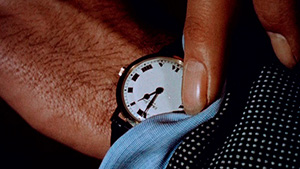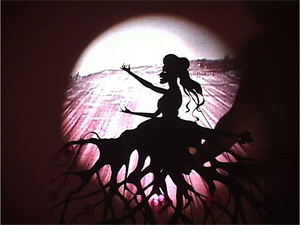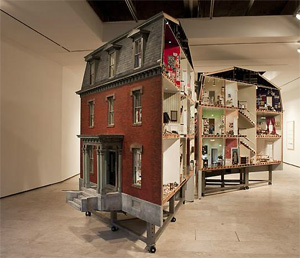Small Mercies
John Haberin New York City
Ten Directions: 2011 Art in Review
I shall have no ten-best list this year (unlike in 2007, 2008, 2009, and 2010). It speaks to the state of the art, which is no longer about the canon or the next big thing. It is not even about a critique of the canon or the next big thing.
Anything goes, but not by breaking political or esthetic boundaries. I mean that it goes all directions at once. Instead of ten best, then, how about ten directions? As you count down to the new year, thank god and 2011 for small mercies. 
10. Making do
Perhaps it marked only a pause between biennials and triennials. Or maybe it was just the recession, but museums learned to make do.
And the making was a revelation. MoMA made blockbusters out of its collection, in "Abstract Expressionist New York" and "German Expressionism: The Graphic Impulse." In the process, it found two sides of the museum's surprisingly rounded history. With "Real/Surreal," the Whitney, too, managed to see itself and the last century from two sides at once. The Met moved Frans Hals barely two hundred yards, but it put him at the center of Dutch painting.
9. Cleaning up
The Met's greatest gift, though, came from a part of itself too long unseen, with the reopened Islamic wing. It finds moments of peace, but also a greater range of Islamic and other worlds. Bellini's Saint Francis at the Frick, newly cleaned and at eye level, brought the equal gift of single-minded concentration.
Others, too, finished something long overdue, starting with the High Line extension. It still has me wavering whether to welcome it as a park or to dismiss it as a parade route, but the tourists are coming fast, and the march is on. The Frick wrapped up its housecleaning, so that Duccio is back on view beside Piero della Francesca. A newly glassed-in portico displays early European porcelain, with that uniquely eighteenth-century mix of material science, geometric clarity, Chinoiserie, and Rococo excess.
8. Anniversaries
A memorial at Ground Zero finally opened as well. That and "September 11" at MoMA PS1 turned a sad anniversary from angry debate or self-serving patriotism to contemplation and actual urban renewal. Romare Bearden had an anniversary as well, his hundredth, and it rescued him from routine. Commemorations included a superb gallery show of Bearden collage. His banner year continues into 2012 with The Block at the Met and the Bearden Project at the Studio Museum.
7. Secret identities
More broadly, African American art stood out—with artists in residence at the Studio Museum, Clifford Owens and Rodney McMillian in performance video, Leslie Hewitt in Chelsea, and intimate new work by both Kara Walker and Mickalene Thomas. (I did not care for Sanford Biggers at SculptureCenter and the Brooklyn Museum.)  The Whitney gave Glenn Ligon a fine retrospective, and I have to credit Jack Shainman gallery for its frequent commitment to African and African American artists. Better still, David Hammons once again refused to stand out, with abstraction hiding behind furniture. One can hardly have smaller mercies than that.
The Whitney gave Glenn Ligon a fine retrospective, and I have to credit Jack Shainman gallery for its frequent commitment to African and African American artists. Better still, David Hammons once again refused to stand out, with abstraction hiding behind furniture. One can hardly have smaller mercies than that.
Gay identity came easily into the mainstream as well, with "Hide/Seek," Peter Hujar, and a witty Lower East Side take on "Notes on Camp." The furor over the first, at the National Portrait Gallery in Washington, led to showings of David Wojnarowicz's controversial video all over town. And the show of portraits of and by gays moved on quietly to Brooklyn.
6. Reeducation
That came for me as another kind of small mercy, an education in what I thought I disliked. I still dislike both Ryan Trecartin and Laurel Nakadate, but their shows at PS1 had to upset my idea of Gen Y art. In much the same way, one may not recall a single artist from Eastern Europe in "Ostalgie," but the New Museum still gave a new slant on East versus West. I can excuse the Met's John Baldessari retrospective the very same way—where of course "East" now means New York and "West" means LA.
5. Tried and true
Yet another kind of small mercy came with the tried and true. They extended back to Richard Pousette-Dart in Chelsea, with rarely seen Abstract Expressionist sculpture along with his painting. Among the living, they ran to Agnes Martin in shades of gray, Richard Serra on paper and in his largest sculpture ever, and Mark di Suvero both in the gallery and on Governors Island. Best of all, Lynda Benglis used her retrospective to sex up and dress down the New Museum.
4. Abstraction
If abstraction was always a small mercy, perhaps a record number of shows showed it alive and well. They included "Geometric Days" at Exit Art, with a splendid short history seen through younger and less-familiar eyes. Better still than Mark Grotjahn, they included a diversity of new faces and summer group shows.
3. Turning away from trash
Sure, the overblown persisted. Did I mention art fairs, Maurizio Cattelan (even before his gold toilet in the Guggenheim), Carsten Höller, David Altmejd, Matthew Barney, and Terence Koh? I hope not. 
Here, too, though, one can look for small mercies. While one prominent voice swooned over Barney, pretty much every other critic had already turned away. Even the record crowds for Cattelan at the Guggenheim and Höller at the New Museum may have a saving grace, if they mean that trashy installations are now officially carnivals. And they, too, may yet run out of rides and attractions.
Trash can have small mercies, too, like the coffee cups with which Gwyneth Leech brightened the holidays and the Flatiron Building. Do Ho Suh destroyed a model building on the scale of a gallery, but he turned out to look to his past and deeply within. When the Met took up Northern Romanticism, it found not just broken ice and frozen landscapes but interiors as well.
2. Greater losses
The year also held a great loss, with the death of Jeanette Ingberman, who founded Exit Art. It has announced its closure, and I can only wish Papo Colo peace, health, and success in whatever is to come. Death came, too, to Robert Miller, who kept Lee Krasner alive for many of us, although he had retired and his gallery seems largely adrift. John Chamberlain died almost on the eve of his retrospective, and the death of Helen Frankenthaler even closer to year's end only reinforced the end of a generation.
1. Bigger mercies at last
For all that, a few big mercies mattered, too, and indeed mattered most. Georges Braque on the Upper East Side and Picasso's guitars at the Modern showed how they changed history, and Cézanne Card Players at the Met gave one the background to understand why. Pablo Picasso also gained from Gagosian's show of his love for Marie-Thérèse Walter (and, rather less so, from Picasso drawings at the Frick, for all the influence of classic French drawing as seen at the Morgan Library this fall).
More spellbinding yet, Christian Marclay compressed film history into twenty-four hours of real time, in The Clock. And in MoMA's first show to date to span the sixth floor, Willem de Kooning encompasses them all.

Of course, this site has reviewed pretty much all this and more at length. You can now also see year-end reviews for 2007, 2008, 2009, 2010, 2012, 2014, 2015, 2016, 2017, 2018, 2019, 2020, nd 2021, 2022, and 2023.




